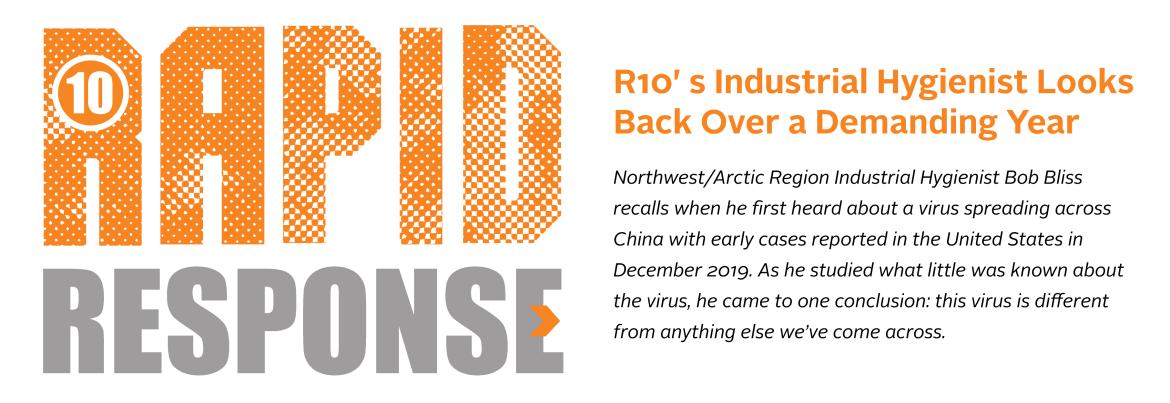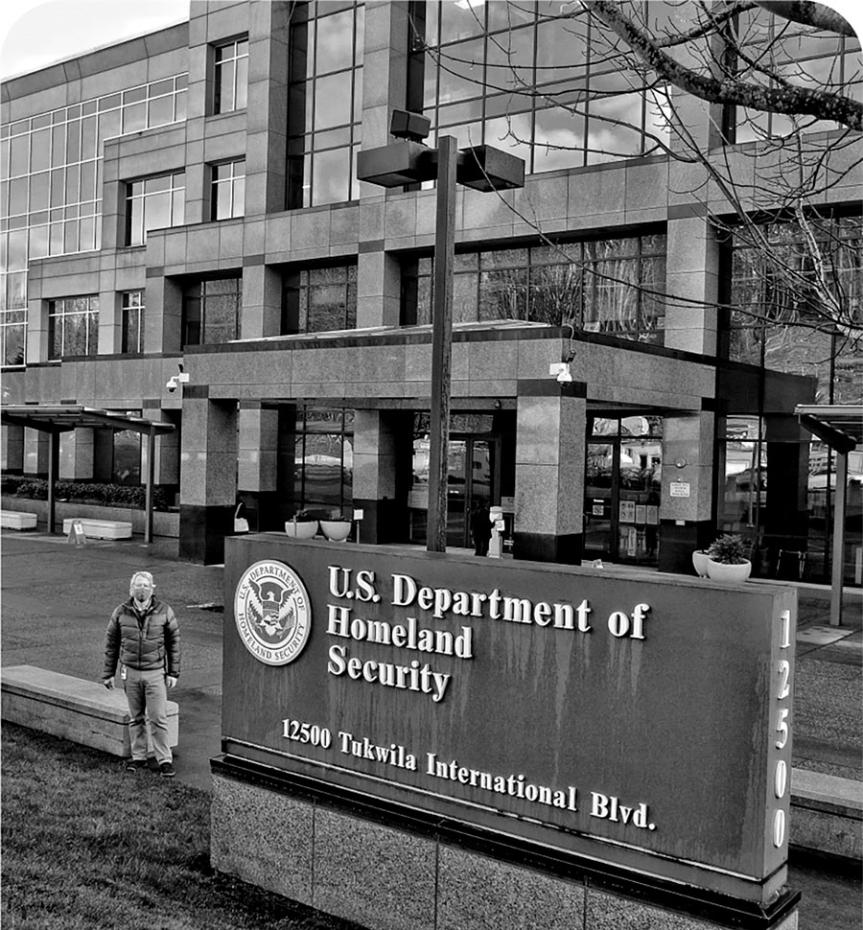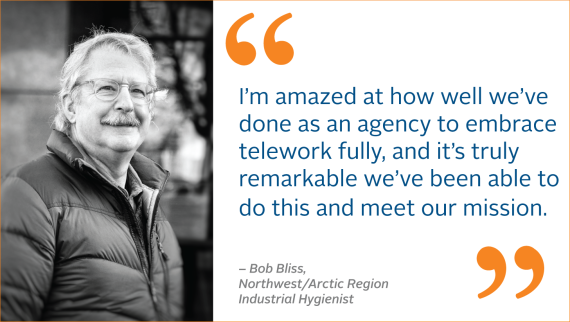R10 Rapid Response 1


That prediction proved true as a worldwide pandemic ensued. It also jump-started a national and regional effort with Bliss and his colleagues as they sought to understand the virus to protect federal employees and the general public in federal buildings as the region became the first in the nation to learn of a federal on-site exposure.
One year later Bliss looks back on the experience and details what he learned. He’s the first to admit, it was a lot.
Early on, as scientists around the globe studied the virus, they suggested masks as a way to limit the spread. Bliss didn’t originally agree, but as he continued his research, changed his mind.
“What I learned was someone asymptomatic could transfer the virus and infect someone and I changed my tune,” Bliss said.
Changing his opinion became a regular process for Bliss during the next year as more was learned about COVID-19 he and his colleagues would make adjustments in order to help contain the spread.
“We learned as time went on that distancing worked, face coverings worked, and not being present in enclosed areas with others worked,” Bliss added.
He and his teams had to learn how to properly clean federal buildings where exposures occurred. The disinfection of surfaces proved to be a large part of their work, but it also included addressing anything airborne.
“Early on we weren’t sure about transference,” said Bliss. “But as we learned more we realized surface transference was less likely than airborne transference of the virus. So we started making adjustments for our buildings.”
This included looking at how ventilation systems worked, how far apart to distance staff, and re-evaluating cleaning practices. These processes continued all year long and were constantly re-evaluated. Much of what Region 10 staff learned about the virus assisted other regions as outbreaks grew across the country.
Then Bliss got the opportunity to take his knowledge to Washington D.C. where he helped guide GSA’s national policy on managing the COVID-19 response. There he worked closely with leadership at all levels to assist other regions as they began to see their exposures climb.
“The experience reinforced my belief that an interdisciplinary approach for the agency was so important,” Bliss said. “There are so many parties involved in developing a national strategy to manage our buildings and provide guidance to our lessors. We all had to work together to achieve success.”
Bliss said each building and each region experienced such different challenges in managing the exposure risks that it was difficult to develop consistent cleaning approaches. As questions came in from around the country, Bliss helped develop guidelines that assisted field staff, but also accommodated adjustments for specific needs.
“One solution didn’t fit every building the same way, Bliss said. “I think we have a far better understanding of the virus and we definitely have a lot more to learn.”
The experience also helped him see more clearly the challenges that awaited him back home as Region 10 began to see exposures drop slightly, only to then increase in the fall.
“I think we’re doing the right things for GSA and other agencies,” Bliss said. “But we also need to remind people if you’re not feeling well, don’t come to work. Wear a mask and socially distance.”
It’s a message he will continue to share until the pandemic has subsided.
“I’m amazed at how well we’ve done as an agency to embrace telework fully, and it’s truly remarkable we’ve been able to do this and meet our mission,” Bliss said.

In his role, Bliss is often asked when we will return to normal. His reply is typically cautionary. He believes our “new” normal will be different from what it was pre-pandemic.
When asked to describe the past year in a single word Bliss offered up - uncertain.
“The uncertainty of what was going to happen from week to week,” Bliss said. “Uncertainty of what actions we needed to take in March and April because of all the unknowns about the virus. But we eventually learned more and we were hopeful our actions would reduce the number of cases.
As he looks back on one of the most significant times in his professional life, Bliss said he is proud of the work the GSA team accomplished at the national and local level. Ultimately, Bliss has a hopeful outlook on our future with COVID-19 as a part of it.
He also offered one more word to sum up the past year. Ever-changing.
“We have to be able to make adjustments and learn as we go.” Bliss said. “The daily changes in our situations require that. It’s what is going to get us through this.”
Story and Photos by: Chad Hutson, Public Affairs Officer
Layout by: Cynthia Henry, Graphic Designer
Read more of the GSA “R10 Rapid Response” series:
- Part 1: R10’s Industrial Hygienist Looks Back Over a Demanding Year
- Part 2: The Air that We Breathe
- Part 3: ROB on the Move…Wait
- Part 4: Purchasing During a Pandemic
- Part 5: Managing the Emptiness

 U.S. General Services Administration
U.S. General Services Administration